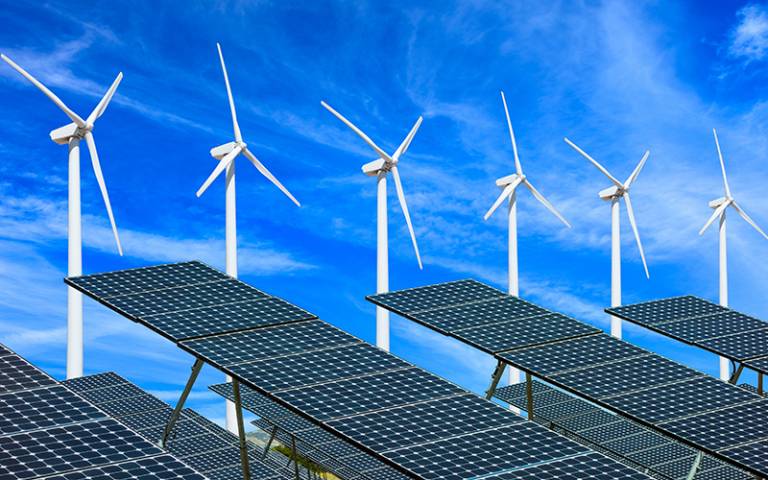Solar and wind could dominate global energy supply by 2050, if recent trends continue
29 October 2021
New paper from UCL Energy Institute researchers finds rapid and sustained growth in electricity from solar photovoltaic and wind energy technologies over recent decades appears to be unprecedented.

The costs of these technologies have also plummeted and are now available at costs competitive with - or below – electricity generated by coal and gas in many parts of the world. High rates of growth are therefore likely to continue.
This new paper by Prof Robert Lowe from UCL Energy Institute, and Paul Drummond from UCL Institute for Sustainable Resources, assesses what proportion of global energy supply these technologies may account for by 2050 if recent trends are allowed to continue.
They examine whether there are any fundamental barriers to this trend continuing, and what the implications may be for global CO2 emissions.
Their findings suggest that solar PV and wind will become dominant in global energy supply by 2050 if their growth continues along an ‘S—curve’; a well-documented shape of adoption for new technologies in which a stage of initial emergence is followed by rapid exponential growth, before growth slows and the technology stabilised in its market share.
They also find that there are no fundamental physical, technical and economic barriers to this happening. If this growth is coupled with widespread deployment of Direct Air Carbon Capture and Storage (DACCS) in the 2040s, global net-zero emissions may be achieved by 2050.
However, achieving such an outcome would require large scale reconfiguration of the architecture of global and regional energy systems, particularly from 2040 onwards, that will require foresight and strategic, coordinated action to overcome.
Links
- Solar, wind and logistic substitution in global energy supply to 2050 – Barriers and implications
- Prof Robert Lowe
- Paul Drummond
 Close
Close

